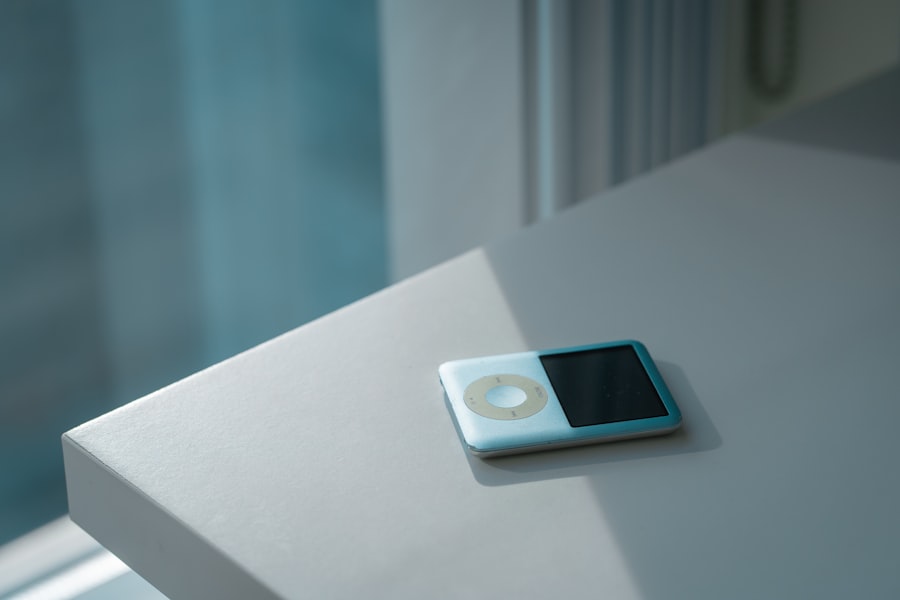A Subscriber Identity Module (SIM) card is a small, removable smart card used in mobile devices to authenticate the user on a cellular network. It contains essential information such as the International Mobile Subscriber Identity (IMSI), which uniquely identifies the user on the network, and encryption keys that secure communications. SIM cards also store contacts and text messages, making them integral to the functionality of mobile phones.
The evolution of SIM cards has seen them shrink in size from the original full-size cards to the current nano-SIMs, which are used in most modern smartphones. The primary function of a SIM card is to connect a mobile device to a carrier’s network, allowing users to make calls, send texts, and access mobile data. Different types of SIM cards exist, including standard SIMs, micro-SIMs, and nano-SIMs, each designed for specific devices.
Additionally, there are variations such as eSIMs (embedded SIMs), which are built into devices and can be programmed remotely. Understanding the role and functionality of SIM cards is crucial for users who may want to switch devices or carriers, as it directly impacts their ability to maintain connectivity.
Key Takeaways
- SIM cards are small chips that store data for cellular networks
- Android SIM cards are not directly compatible with iPhones due to different sizes and technologies
- To use an Android SIM card in an iPhone, you need a SIM card adapter and to ensure compatibility with the iPhone’s network
- Potential issues with using an Android SIM card in an iPhone include network compatibility and limited functionality
- Alternatives to using an Android SIM card in an iPhone include using an iPhone-compatible SIM card or using a mobile hotspot
- Advantages of using an Android SIM card in an iPhone include cost savings and access to different cellular networks
- Disadvantages of using an Android SIM card in an iPhone include potential technical issues and limited support
- Using an Android SIM card in an iPhone may be worth it for some users, but it’s important to consider potential issues and alternatives
Compatibility of Android SIM Cards with iPhones
When considering the compatibility of Android SIM cards with iPhones, it is essential to recognize that both types of devices generally use similar technology for their SIM cards. Most Android smartphones utilize nano-SIM cards, which are also the standard for recent iPhone models. This similarity in size means that physically inserting an Android SIM card into an iPhone is often straightforward.
However, compatibility extends beyond just physical dimensions; it also involves network compatibility and carrier restrictions. Network compatibility is a significant factor when using an Android SIM card in an iPhone. Different carriers may operate on various frequency bands and technologies, such as GSM or CDMMost modern iPhones are designed to work with GSM networks, which are prevalent worldwide.
If the Android SIM card is from a GSM carrier, it is more likely to function correctly in an iPhone. Conversely, if the SIM card is from a CDMA carrier, such as Verizon or Sprint in the United States, it may not work in an iPhone that is not specifically designed for that network type. Therefore, users must ensure that their Android SIM card is compatible with the iPhone’s network capabilities.
Steps to Use an Android SIM Card in an iPhone

To use an Android SIM card in an iPhone, users must follow a series of straightforward steps. First, ensure that both devices are powered off before attempting to swap the SIM cards. This precaution helps prevent any potential damage to the devices or data loss.
Next, locate the SIM card tray on the iPhone, which is typically found on the right side of the device for most models. Using a SIM eject tool or a paperclip, gently insert it into the small hole next to the tray to release it. Once the tray is ejected, remove any existing SIM card from the iPhone and replace it with the Android SIM card.
Ensure that the orientation of the SIM card matches the diagram on the tray to avoid improper installation. After securely placing the Android SIM card in the tray, reinsert it into the iPhone until it clicks into place. Power on the iPhone and wait for it to recognize the new SIM card.
Users may need to enter a PIN code if prompted, which is often required for security purposes.
Potential Issues with Using an Android SIM Card in an iPhone
| Issue | Description |
|---|---|
| Compatibility | An Android SIM card may not be compatible with an iPhone due to different hardware and software requirements. |
| Network Settings | The network settings on the Android SIM card may not be compatible with the iPhone, leading to connectivity issues. |
| Functionality | Certain features and functions of the iPhone may not work properly with an Android SIM card inserted. |
| Carrier Restrictions | Some carriers may have restrictions on using an Android SIM card in an iPhone, leading to limited functionality or service disruptions. |
While using an Android SIM card in an iPhone can be relatively simple, several potential issues may arise during this process. One common problem is network incompatibility. As previously mentioned, if the Android SIM card is from a carrier that operates on a different technology than what the iPhone supports, users may find themselves unable to connect to cellular networks.
This situation can lead to frustration, especially if users rely heavily on mobile data or need to make urgent calls. Another issue that may occur involves settings and configurations specific to each carrier. When inserting an Android SIM card into an iPhone, users might encounter problems with data connectivity or messaging services due to differences in APN (Access Point Name) settings.
These settings dictate how a device connects to the internet and sends multimedia messages. If these settings are not correctly configured for the new carrier associated with the Android SIM card, users may experience difficulties accessing mobile data or sending texts and multimedia messages.
Alternatives to Using an Android SIM Card in an iPhone
For those who encounter challenges using an Android SIM card in an iPhone or prefer not to attempt this process, several alternatives exist. One option is to obtain a new SIM card from the carrier associated with the iPhone. This approach ensures compatibility and allows users to take full advantage of their device’s features without worrying about potential issues related to network connectivity or settings.
Another alternative is utilizing dual-SIM functionality if available on certain iPhone models. Some newer iPhones support dual-SIM capabilities through a combination of a physical nano-SIM and an eSIM. This feature allows users to maintain two separate phone numbers or plans simultaneously without needing to swap out physical cards constantly.
Users can keep their Android number active while using their iPhone for calls and texts through their primary carrier.
Advantages of Using an Android SIM Card in an iPhone

There are several advantages to using an Android SIM card in an iPhone, particularly for individuals who frequently switch between devices or travel internationally. One significant benefit is flexibility; users can easily switch their service between devices without needing to visit a carrier store or wait for a new SIM card to arrive by mail. This convenience can be particularly useful for those who may have temporarily lost their primary device or are testing out different smartphones.
Additionally, using an Android SIM card in an iPhone can provide cost savings for users who want to take advantage of specific carrier plans that may be more affordable or offer better coverage in certain areas. For instance, if a user has a favorable plan with their Android carrier but prefers using an iPhone for its features and ecosystem, they can leverage this arrangement without incurring additional costs associated with changing carriers or plans.
Disadvantages of Using an Android SIM Card in an iPhone
Despite its advantages, using an Android SIM card in an iPhone also comes with several disadvantages that users should consider before making this switch. One notable drawback is the potential for limited functionality due to network incompatibility or configuration issues. Users may find themselves unable to access certain features like visual voicemail or specific messaging services if their Android carrier does not support them on the iPhone platform.
Moreover, there can be complications related to customer support and warranty issues when using a non-native SIM card in a device. If problems arise while using an Android SIM card in an iPhone, users may face challenges when seeking assistance from either carrier’s customer support teams. This situation can lead to delays in resolving issues and increased frustration for users who rely on their devices for daily communication.
Is Using an Android SIM Card in an iPhone Worth It?
The decision to use an Android SIM card in an iPhone ultimately depends on individual circumstances and preferences. For some users, the flexibility and cost savings associated with this arrangement may outweigh potential drawbacks such as compatibility issues or limited functionality. However, others may find that obtaining a new SIM card from their preferred carrier offers a more seamless experience without the hassle of troubleshooting connectivity problems.
Ultimately, understanding both the advantages and disadvantages of this approach allows users to make informed decisions about their mobile connectivity needs. Whether opting for cross-device compatibility or sticking with native solutions, being aware of these factors can enhance overall user experience and satisfaction with their mobile devices.
If you are wondering if you can put an Android SIM card in an iPhone, you may want to check out the article on getiphoneinfo.com for more information. This website provides detailed information about iPhones and their compatibility with different SIM cards. It is important to understand the terms and conditions outlined on getiphoneinfo.com before attempting to switch SIM cards between devices. Additionally, it is crucial to consider the privacy policy on getiphoneinfo.com to ensure your personal information is protected during any device modifications.
FAQs
Can you put an Android SIM card in an iPhone?
No, you cannot put an Android SIM card in an iPhone. iPhones use a different type of SIM card called a nano-SIM, while most Android phones use either a nano-SIM or a micro-SIM.
Can you use an Android SIM card adapter in an iPhone?
No, using an Android SIM card adapter in an iPhone is not recommended. The physical size of the SIM card is not the only factor, as the software and hardware of the two types of phones are not compatible.
Can you transfer data from an Android SIM card to an iPhone?
You cannot directly transfer data from an Android SIM card to an iPhone. However, you can transfer your contacts and other data from your Android phone to your iPhone using methods such as syncing with a Google account or using a third-party app.
Can you use an Android phone with an iPhone SIM card?
No, you cannot use an Android phone with an iPhone SIM card. The SIM card is tied to the specific carrier and phone number, and it is not interchangeable between different types of phones.
Can you use an unlocked Android phone with an iPhone SIM card?
If the Android phone is unlocked and compatible with the carrier’s network, you may be able to use it with an iPhone SIM card. However, it is always best to check with the carrier and ensure that the phone is compatible before attempting to use it with a different SIM card.










